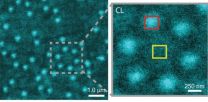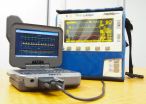(Press-News.org) A new study led by investigators at Brigham and Women's Hospital (BWH) reports the discovery of a genetic variant that is associated with a patient's likelihood of responding to interferon-beta, one of the medications used in treating multiple sclerosis (MS). Published in the Annals of Neurology on May 14, the study also presents evidence that the affected gene, SLC9A9, may have a broader role in regulating the development and activity of certain immune cells that play important roles in inflammatory diseases like MS.
A proportion of MS patients experience disease activity despite treatment. The early identification of the most effective drug for a given individual is critical to impact long-term outcome and to move toward a personalized treatment approach.
To find predictive indicators of a patient's response to treatment, the team, which included researchers from the Ospedale San Raffaele in Milan, Italy, performed a genome-wide association study (GWAS) in MS patients from Brigham and Women's Hospital, San Raffaele Hospital and seven academic MS centers in France, all of whom were being treated with the drug interferon-beta. The variant most predictive of whether or not a patient would respond to the drug was found in the gene SLC9A9.
"This study highlights the fact that genetic variation has a role in the course of a patient's disease in MS, but that this role is modest and will require much larger studies to be understood in detail," said Philip De Jager, MD, PhD, who directs the Program in Translational NeuroPsychiatric Genomics at the Ann Romney Center for Neurologic Diseases at BWH. "We need to expand this type of international, collaborative science."
Discovered in Italian patients, the observation was replicated in other Italian patients as well as patients in Boston and patients in France. "Further work is now needed to validate our results in other collections of patients, particularly patients treated with other MS medications, to evaluate whether the effect of the genetic variant is limited to interferon beta treatment or is relevant to other clinical MS treatments," said Filippo Martinelli-Boneschi, MD, PhD, of San Raffaele Scientific Institute.
The variant detected has a confirmed but weak role in MS. However, laboratory work in this report shows that the loss of the SLC9A9 gene leads immune cells to become much more likely to provoke damaging immune reactions.
"Manipulations of this gene in mice and in human cells will lead us to better understand mechanisms that are involved in the autoimmune response that causes MS," said Wassim Elyaman, PhD, an investigator in the Program in Translational NeuroPsychiatric Genomics at the Ann Romney Center for Neurologic Diseases at BWH.
INFORMATION:
A large, ongoing study of MS patients called CLIMB, based out of the Partners Multiple Sclerosis Center, was integral to the current work and will continue to follow patients over the course of treatment to identify predictors of future disease course and the effectiveness of treatments.
This work was supported by Giovani Ricercatori 2007 of the Italian Ministry of Health, and by grants R01 NS067305, JF2138A1, and RC2GM093080. Additional support was provided by the National MS Society, Fondazione Italiana Sclerosi, the French MS society Association pour la recherche sur la sclerose en plaques, the Club francophone de la SEP, and the Reseau francais pour la genetique de la SEP. De Jager is a recipient of the prestigious Harry Weaver Neuroscience Scholar of the National MS Society.
Full citation: Federica Esposito et al.: A Pharmacogenetic Study Implicates SLC9A9 in Multiple Sclerosis Disease Activity. Ann Neurol 2015; DOI: 10.1002/ana.24429.
Brigham and Women's Hospital (BWH) is a 793-bed nonprofit teaching affiliate of Harvard Medical School and a founding member of Partners HealthCare. BWH has more than 3.5 million annual patient visits, is the largest birthing center in Massachusetts and employs nearly 15,000 people. The Brigham's medical preeminence dates back to 1832, and today that rich history in clinical care is coupled with its national leadership in patient care, quality improvement and patient safety initiatives, and its dedication to research, innovation, community engagement and educating and training the next generation of health care professionals. Through investigation and discovery conducted at its Brigham Research Institute (BRI), BWH is an international leader in basic, clinical and translational research on human diseases, more than 1,000 physician-investigators and renowned biomedical scientists and faculty supported by nearly $650 million in funding. For the last 25 years, BWH ranked second in research funding from the National Institutes of Health (NIH) among independent hospitals. BWH continually pushes the boundaries of medicine, including building on its legacy in transplantation by performing a partial face transplant in 2009 and the nation's first full face transplant in 2011. BWH is also home to major landmark epidemiologic population studies, including the Nurses' and Physicians' Health Studies and the Women's Health Initiative as well as the TIMI Study Group, one of the premier cardiovascular clinical trials group. For more information, resources and to follow us on social media, please visit BWH's online newsroom.
May 14, 2015 -- Researchers at Columbia University's Mailman School of Public Health and Leiden University in the Netherlands found that children whose mothers were malnourished at famine levels during the first 10 weeks of pregnancy had changes in DNA methylation known to suppress genes involved in growth, development, and metabolism documented at age 59. This is the first study to look at prenatal nutrition and genome-wide DNA patterns in adults exposed to severe under-nutrition at different periods of gestation. Findings are published in the International Journal of ...
Army scientists working to support the Ebola virus outbreak response in West Africa have established the first genomic surveillance capability in Liberia, enabling them to monitor genetic changes in the virus within one week of sample collection. An article describing their work was recently published ahead of print in the online edition of Emerging Infectious Diseases.
In the paper, the team offers a concise evaluation of the potential impact of the evolution of Ebola virus Makona, the strain responsible for the current outbreak, based on genome reconstruction of 25 ...
LAWRENCE -- For centuries, people have imagined the possibility of life on Mars. But long-held dreams that Martians could be invaders of Earth, or little green men, or civilized superbeings, all have been undercut by missions to our neighboring planet that have, so far, uncovered no life at all.
Yet visits to the Red Planet by unmanned probes from NASA and the European Space Agency have found evidence that a prime condition for life once may have existed: water.
"There has been a tremendous amount of very exciting findings this year that Mars once contained actively ...
The Aqua satellite's MODIS (Moderate Resolution Imaging Spectroradiometer) instrument took this image of the fires in Siberia. The top image shows the full sized false color image of the area highlighting the burn scars from previous fires.
The sliding "before and after" image shows the real and false color images side-by-side for comparison. The left side shows current fires burning denoted by the red spots. These spots show areas where the thermal detectors on the MODIS instrument recognized temperatures higher than background. When accompanied by plumes of smoke, ...
Soft matter encompasses a broad swath of materials, including liquids, polymers, gels, foam and - most importantly - biomolecules. At the heart of soft materials, governing their overall properties and capabilities, are the interactions of nano-sized components. Observing the dynamics behind these interactions is critical to understanding key biological processes, such as protein crystallization and metabolism, and could help accelerate the development of important new technologies, such as artificial photosynthesis or high-efficiency photovoltaic cells. Observing these ...
DNA damage caused by smoking can be detected in cheek swabs, finds research published today in JAMA Oncology. The study provides evidence that smoking induces a general cancer program that is also present in cancers which aren't usually associated with it - including breast and gynaecological cancers.
The research team, led by Professor Martin Widschwendter, Head of the Department of Women's Cancer at the UCL Institute for Women's Health and Dr Andrew Teschendorff (UCL Cancer Institute) looked at epigenetic alterations - changes to the DNA that switch genes on and off. ...
May 14, 2015 - For medical practices, having more unique doctors on staff and having doctors see more patients doesn't necessarily lead to improved patient outcomes--and in fact, may have the opposite effect, according to a brief report in the June issue of Medical Care. The journal is published by Wolters Kluwer.
The study shows that high blood pressure (BP) is less likely to normalize during times when the number of unique doctors on staff is higher and more patients are seen, suggesting that "[W]hen practices are busier, BP care may suffer," writes Nancy R. Kressin, ...
Automated analysis of the vital signs commonly monitored in patients being transported to trauma centers could significantly improve the ability to diagnose those with life-threatening bleeding before they arrive at the hospital, potentially saving their lives. In the May issue of the journal Shock, a research team from Massachusetts General Hospital (MGH), the U.S. Army, air ambulance service Boston MedFlight, and two other Boston trauma centers report successful field testing of a system that simultaneously analyzed blood pressure, heart rate, and breathing patterns during ...
Scientists have made an important step towards understanding how volcanic eruptions happen, after identifying a previously unrecognised potential trigger.
An international team of researchers from the University of Liverpool, Monash University and the University of Newcastle (Australia) think their findings could lead to new ways of interpreting signs of volcanic unrest measured by satellites and surface observations.
Dr Janine Kavanagh, from the University of Liverpool's School of Environmental Sciences and lead author of the research paper, said: "Understanding the ...
Led by Georgia State University, researchers have developed the first robust and noninvasive detection of early stage liver cancer and liver metastases, in addition to other liver diseases, such as cirrhosis and liver fibrosis.
Their findings were published Wednesday (May 13) in Proceedings of the National Academy of Sciences.
More than 700,000 people are diagnosed with liver cancer each year. It is the leading cause of cancer deaths worldwide, accounting for more than 600,000 deaths annually, according to the American Cancer Society. The rate of liver cancer in the ...


